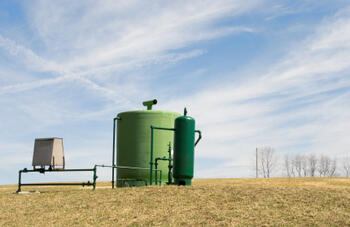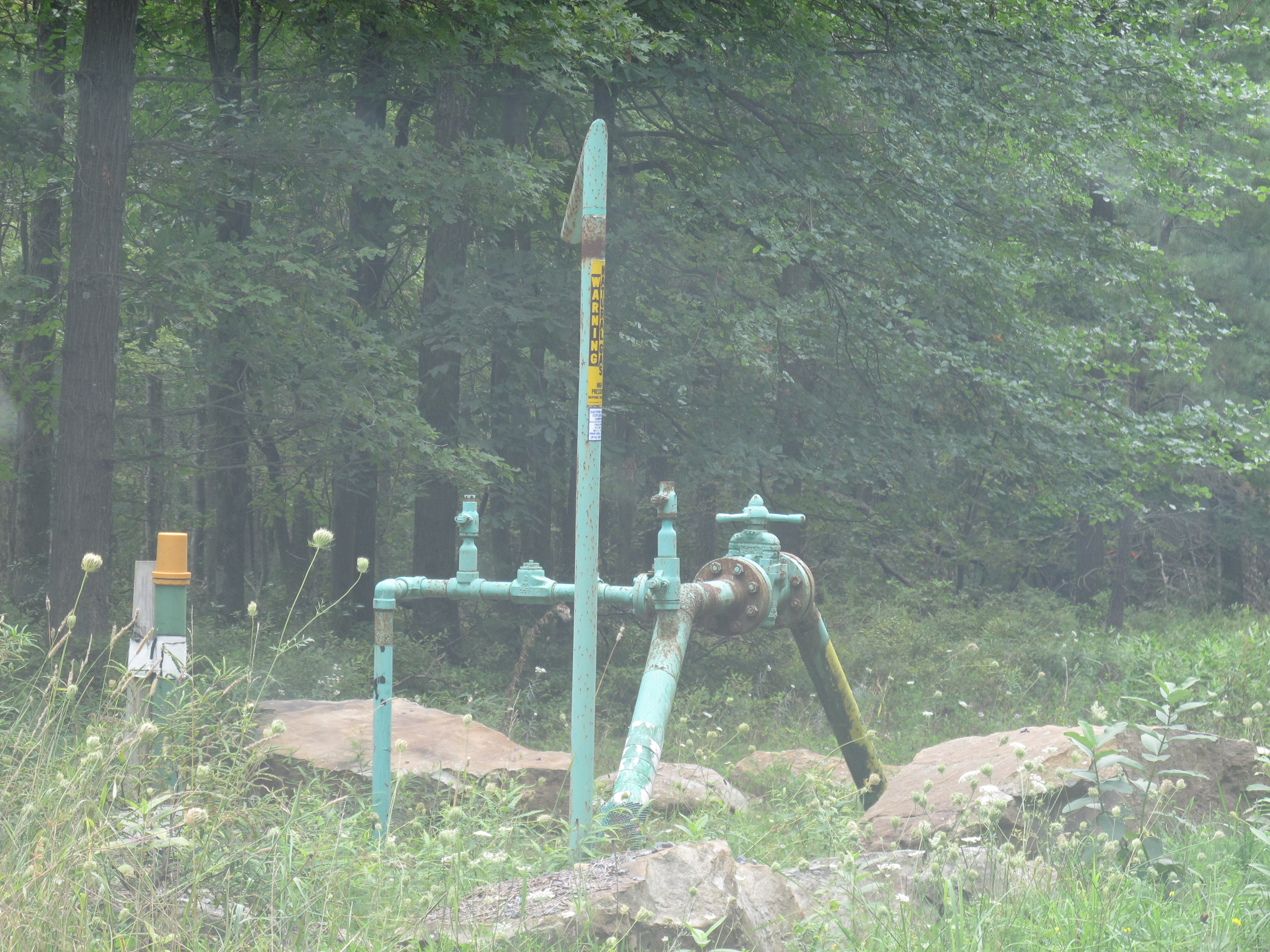For those of you not familiar with horizontal hydraulic fracking, here's a more substantial "Fracking for Dummies" explanation than what the wiki dictionary might give you. Enjoy!
Let's start with a basic shallow vertical gas well.
This is a picture of what a typical vertical, shallow gas well looks like above ground:


http://www.newgeography.com/content/00342-gas-boom-ripples-through-pennsylvania-economy

http://stateimpact.npr.org/pennsylvania/2011/09/12/can-pennsylvanias-state-forests-survive-additional-marcellus-shale-drilling/
These, and similar looking ones, currently dot the countryside of our fair part of PA. Driving from my house to Walmart, there must be at least 15, probably more. There is one of these not a mile from my house. They do not appear to be intrusive and, if you didn't know what they were, you probably would think they were well water containers, or had something to do with watering the fields. Shallow gas wells tap the gas that is within about 3,000 feet from the surface (http://www.bairdpetro.com/shallow_gas.htm). Deeper gas wells, such as those that are needed to reach the Marcellus Shale here in PA, need to go down about a mile plus (http://www.earthworksaction.org/files/publications/OGAPMarcellusShaleReport-6-12-08.pdf?pubs/OGAPMarcellusShaleReport-6-12-08.pdf).
Many of the shallow wells have been around for decades, some even dating back to the 1920's. Many of the older ones have stopped producing and they SHOULD have been filled in; many are not. Many gas companies are holding the landowners to the original lease and will be horizontally drilling on their land (whether the land owners want them to or not), and may or may not be increasing land owner royalties from the original lease amounts - that's a whole other issue and not one that I am going to tackle. None of this is black and white, cut and dry. I am not an expert. I am a person very new to the whole concept of natural gas drilling and I am still trying to learn what I can and sort everything out. That being said, I want more people to know about gas drilling and the effects it can have on our environment and ourselves.
I am making an assumption when I say this: I am guessing that the shallow wells in this area are traditional vertical wells (straight down), possibly directional (drilled at a slant to access multiple pockets, frequently used in offshore drilling http://www.naturalgas.org/naturalgas/extraction_directional.asp). I assume this because it seems that modern horizontal fracking procedures are a relatively new procdure (horizontal drilling, not for gas, has been around since the 1890's). They simply didn't have the technology in the early half of the 20th century to create horizontal gas wells. Horizontal drilling allows for more access to more, previously unreachable with vertical drilling, resources with, presumably, less actual drill holes. Once the horizontal well has been drilled, high pressure shoots chemically altered water, called fracking brine, down the pipe to the horizontal area and the water shoots through holes in the pipe forcing the shale to fracture and release the gases within, simply put. The gas and the fracking brine are then pumped back out. The fracking brine is transferred to holding ponds to be taken by tankers to "treatment plants" or "injection wells" (the water is dumped down an old well and sealed in. The Marcellus Shale geology isn't conducive to receiving injection wells, so that method isn't used in this area. Brine sent treatment plants get "treated" (not really, there's no way all of those chemicals can be removed from the brine to give us our water back) and used as either road deicer or dumped back into waterways (http://www.marcellus-shale.us/drilling_wastewater.htm). Yum.

http://www.naturalgas.org/naturalgas/extraction_directional.asp
Remember what those shallow wells looked like? This is what is required to run a horizontal fracking well:
Well pad containing the well, and the numerous trucks to cart fracking equipment, chemicals and fluids, as well as the gas.

http://www.larsondesigngroup.com/2011/01/21/larson-design-group-develops-energy-group-to-meet-growing-trends/
Well pads with adjoining truck parking and containment ponds (for the fracking fluids containing "proprietary" fracking chemicals.


Both pictures from http://marcellus-wv.com/impacts/land-area
Lovely aren't they? Definitely not the unobtrusive shallow well containers, are they?
So, there you have it. Fracking in a nutshell. Take from this what you will. Do your own research, make your own opinions.
Next up: To move or not to move? That's the fracking question.
No comments:
Post a Comment
Comments or feedback? Go ahead, but please, keep it civil people! Thanks!